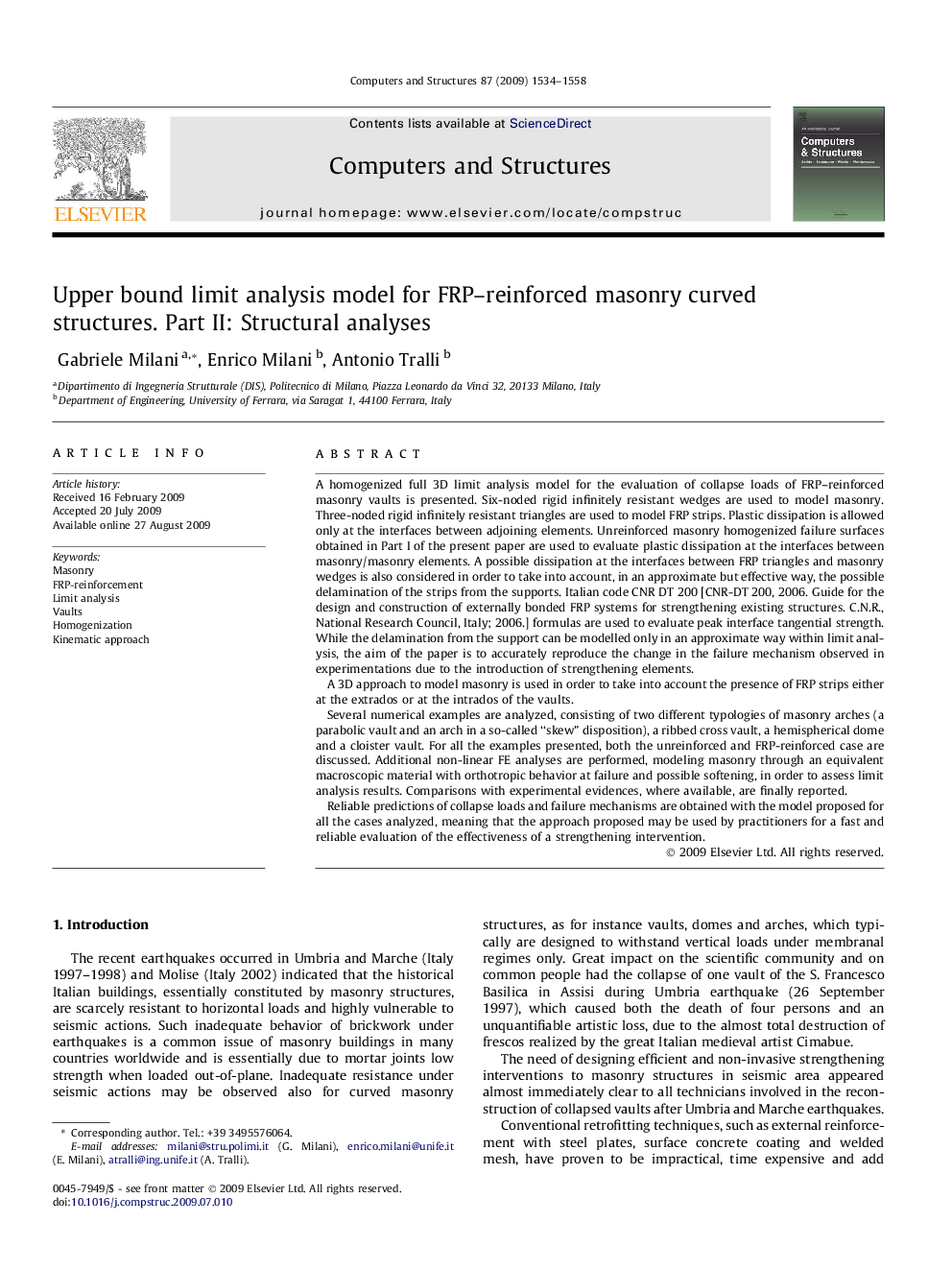| Article ID | Journal | Published Year | Pages | File Type |
|---|---|---|---|---|
| 511696 | Computers & Structures | 2009 | 25 Pages |
A homogenized full 3D limit analysis model for the evaluation of collapse loads of FRP–reinforced masonry vaults is presented. Six-noded rigid infinitely resistant wedges are used to model masonry. Three-noded rigid infinitely resistant triangles are used to model FRP strips. Plastic dissipation is allowed only at the interfaces between adjoining elements. Unreinforced masonry homogenized failure surfaces obtained in Part I of the present paper are used to evaluate plastic dissipation at the interfaces between masonry/masonry elements. A possible dissipation at the interfaces between FRP triangles and masonry wedges is also considered in order to take into account, in an approximate but effective way, the possible delamination of the strips from the supports. Italian code CNR DT 200 [CNR-DT 200, 2006. Guide for the design and construction of externally bonded FRP systems for strengthening existing structures. C.N.R., National Research Council, Italy; 2006.] formulas are used to evaluate peak interface tangential strength. While the delamination from the support can be modelled only in an approximate way within limit analysis, the aim of the paper is to accurately reproduce the change in the failure mechanism observed in experimentations due to the introduction of strengthening elements.A 3D approach to model masonry is used in order to take into account the presence of FRP strips either at the extrados or at the intrados of the vaults.Several numerical examples are analyzed, consisting of two different typologies of masonry arches (a parabolic vault and an arch in a so-called “skew” disposition), a ribbed cross vault, a hemispherical dome and a cloister vault. For all the examples presented, both the unreinforced and FRP-reinforced case are discussed. Additional non-linear FE analyses are performed, modeling masonry through an equivalent macroscopic material with orthotropic behavior at failure and possible softening, in order to assess limit analysis results. Comparisons with experimental evidences, where available, are finally reported.Reliable predictions of collapse loads and failure mechanisms are obtained with the model proposed for all the cases analyzed, meaning that the approach proposed may be used by practitioners for a fast and reliable evaluation of the effectiveness of a strengthening intervention.
